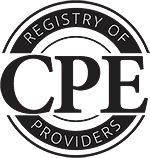Taking this course will enable you to better understand the development and integration of financial statements and the issues that preparers and users of financial statements face. Special consideration is given to asset and liability valuations, revenue recognition, income measurement, and differences between US GAAP and IFRS.
Topics include:
- Financial Statement Overview
- Valuation of Accounts Receivable
- Valuation of Inventory
- Valuation of Securities
- Depreciation Methods
- Impairment of Long-Term Assets
- Valuation of Liabilities
- Income Taxes on the Balance Sheet
- Leases
- Equity Transactions
- Revenue Recognition
- Income Measurement
- International Financial Reporting Standards (IFRS)-US GAAP (Generally Accepted Accounting Principles) Differences
The content covered in this course provides a pathway to developing your analytical and critical-thinking skills and closing skills gaps in a variety of relevant topics.
Prerequisites
No advanced preparation or prerequisites are required for this course.
Learning Objective
- Identify the major components, classifications, and limitations of each financial statement.
- Identify the basic disclosures related to each financial statement.
- Identify issues related to the valuation of accounts receivables, including timing of recognition estimation of uncollectible amounts.
- Identify issues in inventory valuation including which goods and costs to include.
- Identify and compare inventory cost assumptions.
- Identify how to apply the lower of cost or market rule.
- Identify the impact of inventory errors.
- Recognize the differences between the held-to-maturity, trading, and available-for-sale methods to classify securities.
- Identify the key components of the fair-value, equity, and consolidated methods to account for equity investments.
- Explore the effect on the financial statements of using different depreciation methods.
- Recognize how to account for the impairment of long-term tangible assets and goodwill.
- Explore inter-period tax allocation and deferred taxes.
- Recognize and analyze temporary differences and distinguish between deferred tax liabilities and deferred tax assets.
- Identify the differences between operating leases and capital leases and explore the accounting for each.
- Explore the applicationof revenue and expense recognition to various types of transactions.
- Identify instances where revenue is recognized before and after delivery of goods or provision of service.
- Identify and describe the differences between International Financial Reporting Standards (IFRS) and US GAAP (Generally Accepted Accounting Principles) for the following: Revenue recognition, expense classifications, consolidations, financial statement presentation, and asset valuation.
Last updated/reviewed: March 8, 2024
515 Reviews
Lesson Questions and Answers0 Questions
There are no questions.
Answers to Frequently Asked Questions (FAQs)





Ask the instructor a question about this lesson